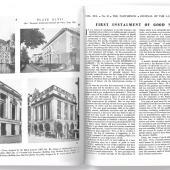Ireland leads the way with Age Friendly homes
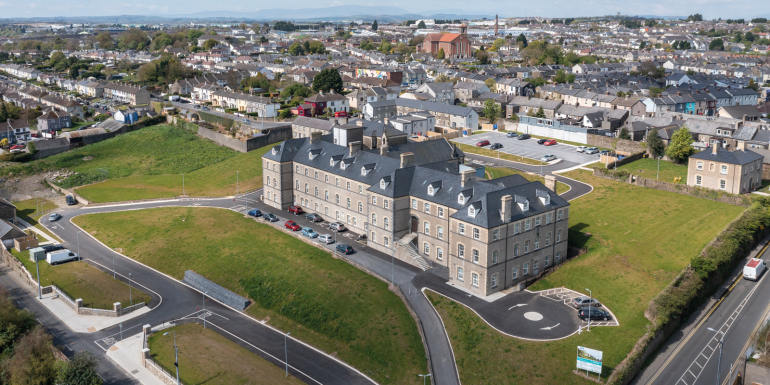
Like many countries, Ireland’s population is getting older. Unlike many countries, it has a supportive approach, Huw Morris reports.
Built in 1874 for the Little Sisters of the Poor, St Joseph’s House in Waterford, Ireland, was originally a care home for older people. By 2010, it became vacant and one of the city’s most prominent derelict city-centre sites.
Today, the site – comprising a convent, courtyard, presbytery and school buildings – has been turned into an age-supported development for people aged over 55.
The convent contains a mix of 50 one- and two-bedroom homes, with two lifts and five stairwells, while 21 other homes are located in outbuilding clusters. The former chapel has also been repurposed as a community space.
The homes feature entry-level toilets and wet rooms or walk-in/step-in showers. Good security and technology systems abound, with capped electrical points to install a chair lift, while the main house has fob access and an intercom system at its external doors. CCTV monitors the main access doors.
Crucially for residents, St Joseph’s House is well connected to amenities. GPs, pharmacies, primary care, supermarkets, libraries, a post office, restaurants, newsagents and hairdressers are all close by. The redevelopment was achieved by Waterford City & County Council under Housing for All, the government’s housing plan to 2030.
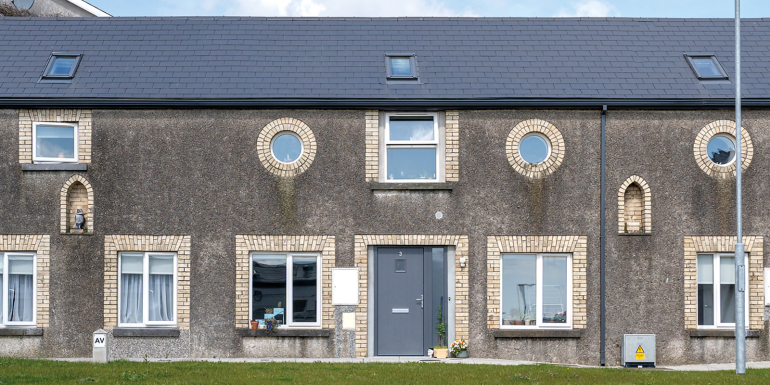
Age Friendly Ireland
Like many countries, Ireland is contending with a burgeoning challenge. Its people are getting older – so much so that it “will represent one of the most significant demographic and societal developments that Ireland has ever faced,” according to the government policy statement Housing Options for Our Ageing Population.
Inspired by the World Health Organization’s (WHO) global age-conscious framework, the country recognised that changing demographics require a very different approach to housing and the public realm. The response was the Age Friendly Ireland Shared Service Office within local government, with programmes and initiatives across all 31 local authorities.
This works with multiple stakeholders to prepare the country’s infrastructure and services for an ageing population. It also extensively consults older people nationwide via Older People’s Councils to ensure their voices inform policy and operational decisions. A shared service centre, based in Meath County Council, co-ordinates the panoply of projects across each local authority.
Ireland is now ahead of the international curve, and the first age-supportive country to be recognised by WHO in 2019.
“Based on the last census, we have 833,300 people over the age of 65. That’s projected to grow to 1.6 million to 1.8 million depending on the models you look at by 2050,” says Declan Gaffney, Age Friendly Ireland’s National Technical Programme Manager.
“We’re going to have a huge change in the population, with double the number of those aged over 65, and that is going to put pressure on all public services, not just housing and the public realm.
“We need housing and healthcare to talk to each other. As we age, we become less mobile with a higher prevalence of disability – health and housing are key to addressing that.”
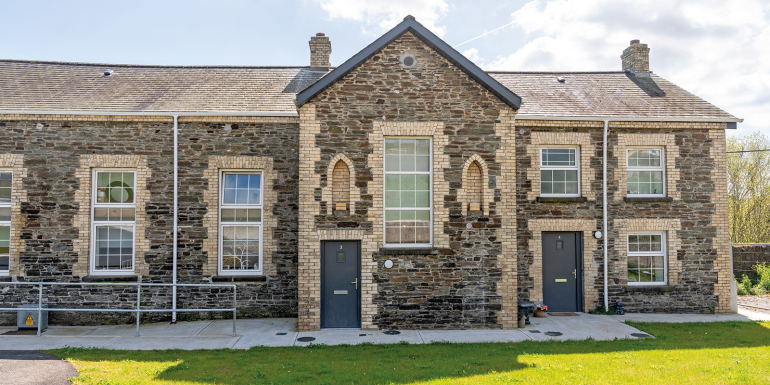
Key features of an age-supportive sphere
Public seating
The best place for seating is in a pleasant microclimate with a good view; with low noise levels to allow conversation; where there is no pollution; and away from heavy traffic. Seats should be located at the edge of the space with a person’s back covered. A well-designed seat has arm rests, and its material needs to be more accommodating than cold concrete, preferably sustainable timber. Seats should be located every 100 metres and more than 10 metres away from rubbish bins.
Balance is the key design element – 60 decibels is the upper limit for adult conversation and seats placed strategically behind dwarf walls or raised planters can slightly reduce the decibel limit to more accommodating levels.
Public toilets
These should be within walking distance of services used by older people – such as the post office or bank – and should be easy to access. It is important to have clear signs and access to existing toilets in public buildings such as libraries, museums, hotels, banks, local authority buildings and general business buildings.
Parking
Convenient parking spaces near older people’s desired destinations increases accessibility and the use of public and other essential services by those with reduced mobility and walking speed. Local authorities have installed more than 500 age-supportive car parking spaces throughout Ireland.
Tone zones
A collection of outdoor gym equipment that is extremely simple to use, ‘tone zones’ promote exercise and wellbeing. Most are located in an open area such as a park that could become a destination point in a person’s exercise regime. They should have a covered element as shelter from showers.
Pedestrian crossings
Based on their usual walking speed, one in three adults aged 65 to 74 years and three in five adults aged 75 years and older walk slower than 1.2 metres per second. They therefore do not have enough time to cross a road in the time provided at many pedestrian crossings.
A rough guide would be to double the normally permitted time. For an average seven-metre-wide road, older people will need between 20-35 seconds to cross without undue stress. Those with a visual impairment or physical disability will need more time.
When older people get to a pedestrian crossing, their first instinct can be to rest slightly. Installing leaning posts can help.
Bins
Bins should be located at least ten metres from seating and resting areas as flies, insects and wasps can be a nuisance in the summer. There should be one bin for every 100 metres to complement the number of seats.
Parks and green areas
Small design considerations such as appropriate seating, well-maintained bins, adult gym equipment and parking positively contribute to an older person’s experience. Not all spaces need to be ‘green’ – a small pocket park paved area with a seat can be an important resting place. Areas should offer an interesting and pleasing visual perspective with comfortable, sheltered, age-appropriate seating. They should feel safe and well lit.
Wayfinding and signs
A strategically placed base map with complementary fingerpost signs should be simple and give essential and clear information. Lettering and symbols should be large with a distinct colour contrast to the background – preferably dark lettering on a light background – and should generally be used for cultural, civic or public event destinations. Their height should be appropriate and include time, distance and (if relevant) gradient icons on signs.
Bus stops
Older people prefer well-lit, sheltered bus stops with seating, with enough space for wheelchair users to park alongside or nearby. They should provide real-time information on bus times together with timetables and avoid excessive glass. Developers should also avoid where possible standalone bus stops with no shelters or seating. Clear lines of sight can improve safety.
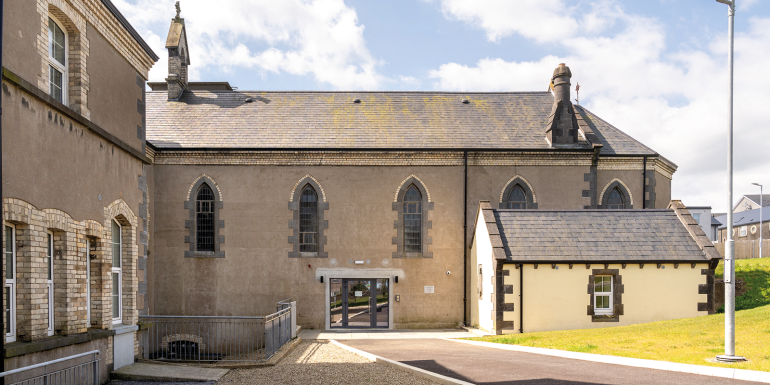
Universal Design
So, what are age-supportive homes? While suitable for all ages, they particularly meet the needs of older people by featuring level access and connections to the outdoors, being integrated into the neighbourhood and being capable of accommodating assistive technology as residents grow older.
Such homes follow four ‘Universal Design’ principles. This concept – which underpins Age Friendly Ireland’s design elements – focuses on the design and composition of an environment so that it can be accessed, understood and used to the greatest extent possible by all people, regardless of their age, size or disability (see Universal Design principles).
Universal Design principles
The four key principles developed by the Centre for Excellence in Universal Design and established by the National Disability Authority in Ireland are:
- integration into the neighbourhood
- easy to approach, access and move about in
- easy to understand, use and manage; and
- flexible, safe, cost effective and adaptable over time.
The four principles inform ten key Age Friendly Ireland design features:
- Well-connected to local amenities
- Connected to the outdoors
- Easy to approach and enter
- Easy to move about
- A second bedroom
- Accessible and adaptable toilets and bathrooms
- Energy and cost-efficient
- Good technology systems
- ‘Crime Prevention Through Environmental Design’ principles such as good natural surveillance, good lighting, community interaction, public and private space definition and physical security; and
- Easy-to-use fittings and fixtures.
This concept extends to public realm design. Walkability – the ease with which older people can move around an area, building or space – is a particular mantra. While this affects everybody regardless of age, older people tend to be more aware of and challenged by their environment.
Age Friendly Ireland’s towns programme demonstrates that while areas may be technically accessible, following key age-supportive and Universal Design elements makes a huge difference (see Key features of an age-supportive sphere).
Gaffney says the concept is embedded within government policy as well as Ireland’s planning framework and national development plan. In short, the approach is holistic rather than the type of silo thinking that bedevils many developments.
“Building age-supportive housing in Ireland is a complex task that requires addressing multiple challenges across design, affordability, location and accessibility,” he adds. “Effective solutions require co-ordinated efforts between the government, developers, healthcare services and local communities. This all ensures older adults can age with dignity and independence.”
Full details of the Age Friendly Ireland Shared Service Office can be found at agefriendlyireland.ie
Further information and resources are available at agefriendlyhomes.ie







